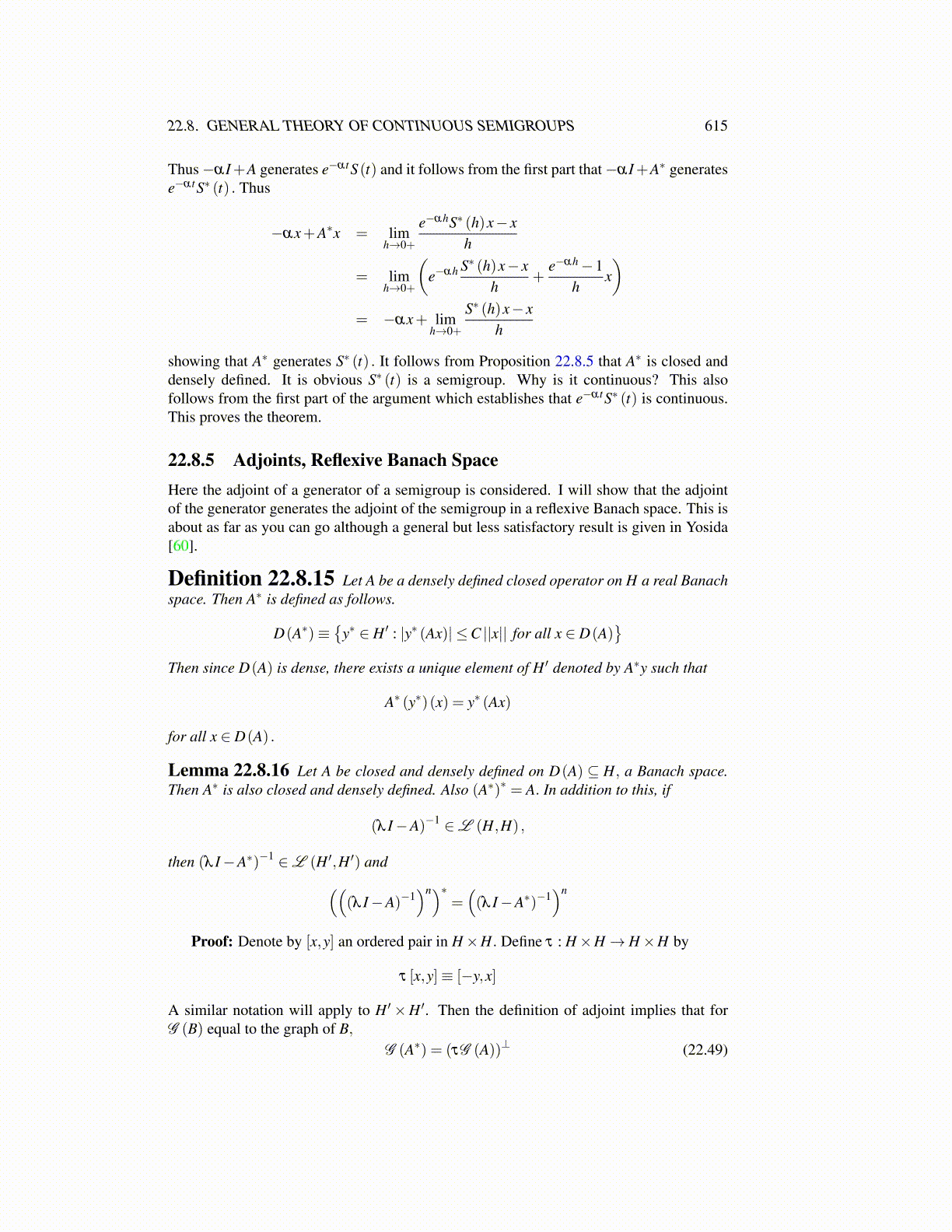
22.8. GENERAL THEORY OF CONTINUOUS SEMIGROUPS 615
Thus−αI+A generates e−αtS (t) and it follows from the first part that−αI+A∗ generatese−αtS∗ (t) . Thus
−αx+A∗x = limh→0+
e−αhS∗ (h)x− xh
= limh→0+
(e−αh S∗ (h)x− x
h+
e−αh−1h
x)
= −αx+ limh→0+
S∗ (h)x− xh
showing that A∗ generates S∗ (t) . It follows from Proposition 22.8.5 that A∗ is closed anddensely defined. It is obvious S∗ (t) is a semigroup. Why is it continuous? This alsofollows from the first part of the argument which establishes that e−αtS∗ (t) is continuous.This proves the theorem.
22.8.5 Adjoints, Reflexive Banach SpaceHere the adjoint of a generator of a semigroup is considered. I will show that the adjointof the generator generates the adjoint of the semigroup in a reflexive Banach space. This isabout as far as you can go although a general but less satisfactory result is given in Yosida[60].
Definition 22.8.15 Let A be a densely defined closed operator on H a real Banachspace. Then A∗ is defined as follows.
D(A∗)≡{
y∗ ∈ H ′ : |y∗ (Ax)| ≤C ||x|| for all x ∈ D(A)}
Then since D(A) is dense, there exists a unique element of H ′ denoted by A∗y such that
A∗ (y∗)(x) = y∗ (Ax)
for all x ∈ D(A) .
Lemma 22.8.16 Let A be closed and densely defined on D(A) ⊆ H, a Banach space.Then A∗ is also closed and densely defined. Also (A∗)∗ = A. In addition to this, if
(λ I−A)−1 ∈L (H,H) ,
then (λ I−A∗)−1 ∈L (H ′,H ′) and(((λ I−A)−1
)n)∗=((λ I−A∗)−1
)n
Proof: Denote by [x,y] an ordered pair in H×H. Define τ : H×H→ H×H by
τ [x,y]≡ [−y,x]
A similar notation will apply to H ′×H ′. Then the definition of adjoint implies that forG (B) equal to the graph of B,
G (A∗) = (τG (A))⊥ (22.49)